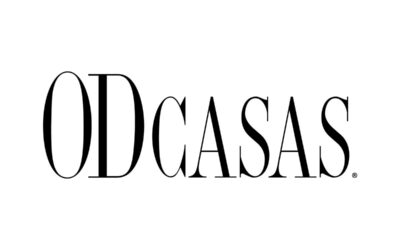
In many parts of the world, air conditioners are one of the first tools people reach for when it comes time to beat the heat — either during the summer, or in some places, all year round. However, air conditioning isn’t always a foolproof solution because, while it is a quick and easy fix once installed, A/C has also been known to increase electric bills.
Fortunately, aside from air conditioning, there are ways a home can be designed to keep its inhabitants cool — which is especially helpful when you consider the ongoing effects of global warming. For more information on home features that can help your space cool down, we reached out to several experts for details.
1. Consider sun exposure.
“In our research process during pre-design, we look at factors such as sun exposure,” Wesley Kean, the founding architect and design creative at KoDA, tells Hunker. This allows architects to take advantage of shaded locations “through the use of covered canopy areas,” Kean adds.
When creating shadowed zones around the home, Victoria Benatar — the founder of Victoria Benatar Architect PLLC and co-founder of EXD Architecture — tells Hunker, “This can be achieved by utilizing brise soleil (from the French ‘sun breaker’) on the building’s facades, which is an architectural feature that reduces heat gain by deflecting sunlight.” Specifically, brise soleil refers to using a series of horizontal or vertical blades to control how much sunlight is able to enter a space.
Likewise, roof projections can be used to protect the home’s interior from direct sunlight. “This can be achieved by designing the house so that the roof projects out from the exterior wall,” says Benatar. “The longer the projection, the more shade is created on the perimeter wall to reduce the heat exposure.”
A proper distribution of windows must also be considered so that the home does not receive direct sunlight during the hottest hours of the day. “Ideally, windows should let air flow in from the north facade [in the Northern Hemisphere],” architect Krismary Chacon, co-founder of KxK Architecture, tells Hunker. Since, in this hemisphere, the home’s south facade receives the most sunlight during the day, you’ll want to avoid having multiple windows on this side of the home.
2. Utilize wind direction.
“One of the best ways to cool a house without electricity is utilizing natural ventilation,” Benatar explains. “To bring fresh air into a building, natural ventilation uses the wind to create air movement without the use of mechanical systems. The building orientation has to be perpendicular to the prevailing winds, allowing enough pressure for it to flow inside.”
Windows can be used to take advantage of air circulation, creating a wind path. “Cross ventilation is one of the most common systems in buildings because it reduces the intensive use of air-conditioning equipment,” states Chacon. Cross ventilation refers to opening windows on opposite sides of a space to allow air to flow in and out of the house, preventing hot air from staying stagnant.
“The window type, dimensions, and location are relevant, and will result in different ventilation rates,” Benatar adds. “It is important to consider that the speed of the wind will increase if the opening is narrow … The wind’s pressure and the size of the openings affect how the wind flows inside the building.”
Other features that can help you use wind direction to your advantage include breezeways and wraparound porches. “Any strategy that allows the wind to flow inside the property, or reduces the direct sunlight, will definitely decrease the heat and create natural ventilation, passive cooling, and sustainable architecture,” explains Benatar.
3. Opt for heavyweight materials.
Heavyweight materials — such as stone, brick, adobe, or tile — allow homes to remain cooler. “These heavy materials help us store heat [during the day], and thus reduce temperatures inside buildings,” architect Walter Küttel, co-founder of KxK Architecture, tells Hunker, referring to the concept of thermal mass: the ability of certain materials to absorb, store, and release heat.
However, Küttel warns that this is not the best solution for all spaces. In places where temperatures are consistently warm throughout the day and at night, the effect does not have a major impact. “Usually, [heavyweight materials are] used in places where temperatures vary between day and night,” Küttel explains. “For example, in deserts where daytime temperatures are 105 degrees [Fahrenheit], and at night, temperatures tend to drop to about 50 degrees.” In these conditions, the heat stored by the materials during the day will gradually be released at night.
CLICK HERE to read the rest of the original article on Hunker.com



